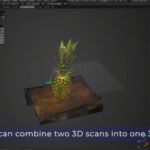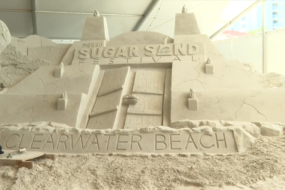
Pilgway today announced the official release of 3DCoat 2025, introducing a raft of practical enhancements across sculpting, modeling, and texturing workflows. No buzzword spin here—just tools that enable artists to stay in the creative flow.
Pilgway today announced the official release of 3DCoat 2025, introducing a raft of practical enhancements across sculpting, modeling, and texturing workflows. No buzzword spin here—just tools that enable artists to stay in the creative flow.
New look, new workflow shortcuts
The update brings 18 fresh UI themes and a dedicated Hotkey Manager, allowing users to customize shortcuts without third‑party hacks. Artists can now tailor the interface look and keymap to match pipeline standards or personal preference.

Node Room added to Sculpt workspace
For the first time, sculpting gets non‑destructive node‑based material workflows via the new Node Room. Users can stack and tweak volumetric and surface materials without baking, offering flexibility in sculpt‑paint iterations.

RealityCapture photogrammetry integration
Pilgway has integrated RealityCapture into 3DCoat 2025, enabling direct photogrammetry import. Artists can snap a real-world object, process it into a mesh, then sculpt, retopo, or texture within the same app.
New array and Boolean tools
The Sculpt workspace sees a Surface Array tool for distributing geometry across surfaces or faces, and an Array tool to place voxel models along curves. Soft Booleans now let users use brush radius to control bevel radius—particularly useful for blending voxel shapes.

Smart Hybrid and fabrication boosts
A Smart Hybrid mode allows low‑poly input to generate NURBS‑like patches that can be exported as high‑poly, low‑poly, or paint meshes. Transform panel scene state presets mimic keyframes, aiding staged modeling or 3D print baking. Volumetric Booleans now include a gap option to guarantee clearance for parts intended for printing.

Workflow quality and usability
Normal Map to Mesh converts PBR‑painted surfaces into true geometry. Move tool now supports infinite depth—including in perspective—and FPS monitor oversees performance. Asset panels now feature a search field, while major-brand drawing tablets are supported out of the box.
Pilgway reiterates that existing 3DCoat V4 and recent licence holders can upgrade via their account. New users can test a 30‑day full trial, and unused export remains available in Free Learning mode afterward.

Why it matters
These updates deliver granular control, integration efficiency, and faster iteration. The Node Room adds non‑destructive flexibility previously missing in sculpt‑focused workflows. RealityCapture support saves a round-trip step between scanning and texturing tools. And the combination of array tools, Boolean refinements, and export features strengthen both creative and fabrication endpoints.
Technical users should note that while stability appears tight, all new features should be evaluated in-house before being adopted in client or production pipelines.











